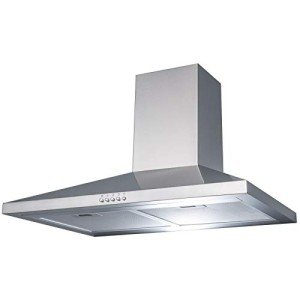
Cooker Extractor Fan
Add a review FollowOverview
-
Founded Date March 23, 1954
-
Sectors Restaurant / Food Services
-
Posted Jobs 0
-
Viewed 3
Company Description
See What Cooker Extraction Hoods Tricks The Celebs Are Using
The Importance of Cooker Extraction Hoods: A Comprehensive Guide
In modern kitchens, the central role of a cooker extraction hood can not be overemphasized. As cooking methods advance and kitchen style evolves, these appliances have actually become essential in keeping a clean and safe cooking environment. Cooker extraction hoods, often called range hoods or kitchen hoods, serve multiple functions, from expelling smoke and smells to enhancing air quality. This article intends to inform readers about different elements of cooker extraction hoods, including their types, functionalities, benefits, and upkeep ideas.

What is a Cooker Extraction Hood?
A cooker extraction hood is a mechanical gadget set up above cooktops or varieties developed to extract smoke, fumes, heat, and smell created during cooking. These hoods can either be ducted, venting the air outside, or ductless, filtering and recirculating the air back into the kitchen.
Why Are Cooker Extraction Hoods Important?
- Air Quality: They help in maintaining excellent air quality by removing cooking contaminants.
- Smell Control: They remove unpleasant smells that may stick around after cooking.
- Moisture Reduction: They lower humidity levels in the kitchen, preventing mold development.
- Security: They minimize the risk of fire triggered by grease build-up.
- Convenience: They boost the cooking experience by enabling users to operate in a pleasant atmosphere.
Kinds Of Cooker Extraction Hoods
Picking the right cooker extraction hood depends upon a range of factors, including kitchen size, cooking routines, and individual preferences. Here are the primary types:
| Type | Description | Best for |
|---|---|---|
| Wall-Mounted | Set up versus a kitchen wall, often above the range. | Basic kitchens |
| Under-Cabinet | Installed beneath kitchen cabinets, saving space. | Smaller kitchens |
| Island Hoods | Set up above kitchen islands and generally suspended. | Open-concept kitchens |
| Downdraft Hoods | Retractable hoods that turn up from the counter when needed. | Stylish kitchens |
| Expert Hoods | Durable hoods developed for extensive cooking. | Premium kitchens |
| Ductless or Recirculating | Filters air and recirculates it back into the kitchen. | Houses doing not have ductwork |
Features to Consider
When picking a cooker extraction hood, consider the following functions:
-
CFM Rating: Higher Cubic Feet per Minute (CFM) ratings suggest stronger airflow. A CFM of 300-600 is typically sufficient for most home kitchens, while expert models might exceed 900 CFM.
-
Noise Levels: Measured in sones, quieter hoods are around 1-3 sones. Think about the noise level based on your cooking routines.
-
Fan Speed: Multiple speed settings permit users higher flexibility based on cooking requirements.
-
Lighting: Integrated lighting can improve the cooking experience while supplying exposure over your cooktop.
-
Filters: Aluminum mesh or baffle filters are effective for grease and odor elimination. Some hoods likewise feature charcoal filters for ductless options.
Advantages of Cooker Extraction Hoods
Here’s a list of benefits connected with having a cooker extraction hood:
- Enhanced air quality
- Decrease in cooking smells
- Decreased humidity levels
- Minimization of grease accumulation
- Improved security
- Increase in kitchen aesthetics
- Included property worth
Installation and Maintenance
Setup Process
The setup of cooker extraction hoods might require expert help, especially for ducted models. Here are some basic actions:
- Measure the Kitchen: Ensure the suitable size of the hood for your cooktop.
- Pick the Location: Ideally, the hood needs to be placed 20-30 inches above the cooking surface area.
- Ducting (if suitable): Plan the ducting path for optimum air flow outside the home.
- Secure the Hood: Follow the maker’s guidelines for safe and secure mounting.
- Connect Power: Ensure electrical connections comply with regional codes.
Maintenance Tips
- Regular Cleaning: Clean filters monthly to prevent grease accumulation.
- Change Filters: Change charcoal filters based on the producer’s suggestions.
- Check Ducts: Ensure ducts are clear and complimentary of blockages to keep airflow.
- Examine Lights: Replace bulbs as required to make sure adequate lighting throughout cooking.
Often Asked Questions (FAQ)
1. How typically should I clean my cooker extraction hood?
It is recommended to clean up the filters of your cooker extraction hood at least once a month.
2. Can I install a cooker extraction hood myself?
While it is possible to install it yourself, specifically if it’s a ductless model, employing an expert is a good idea for ducted hoods to ensure security and compliance with local building codes.
3. What is the perfect CFM score for a home kitchen?
A CFM in between 300 and 600 is normally sufficient for many home kitchens; however, you might require a greater ranking for expert cooking designs.
4. Are ductless hoods as reliable as ducted hoods?
Ducted hoods are usually more efficient at getting rid of heat, smoke, and odors, as they vent air exterior. Ductless hoods can be efficient however require routine filter modifications and might not remove heat as well.
5. How long will my cooker extraction hood last?
With appropriate upkeep, a quality cooker extraction hood can last 10-15 years.
In conclusion, cooker extraction hoods are a necessary addition to any kitchen, providing benefits that improve both the cooking experience and total air quality. With numerous types offered, tailored features, and consistent maintenance, homeowners can pick the ideal hood to meet their cooking requirements while promoting a healthier home environment.

